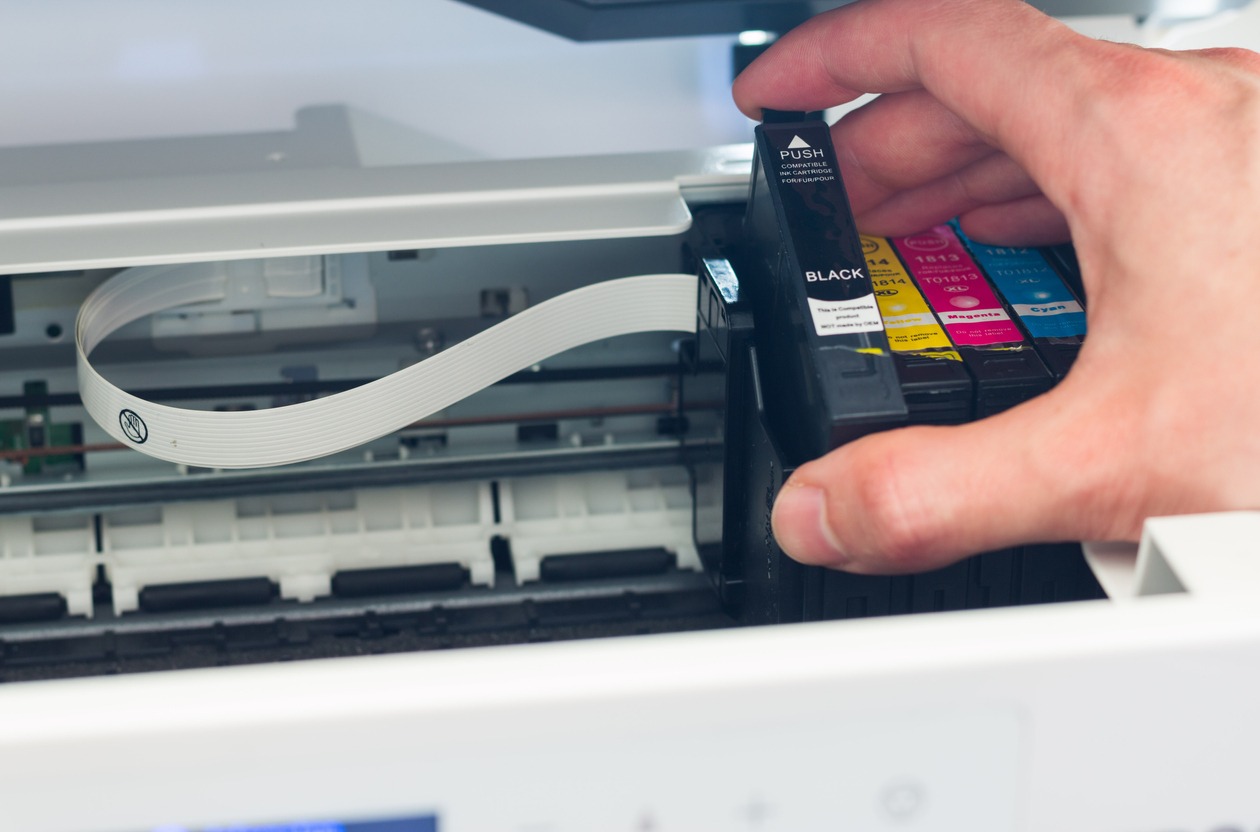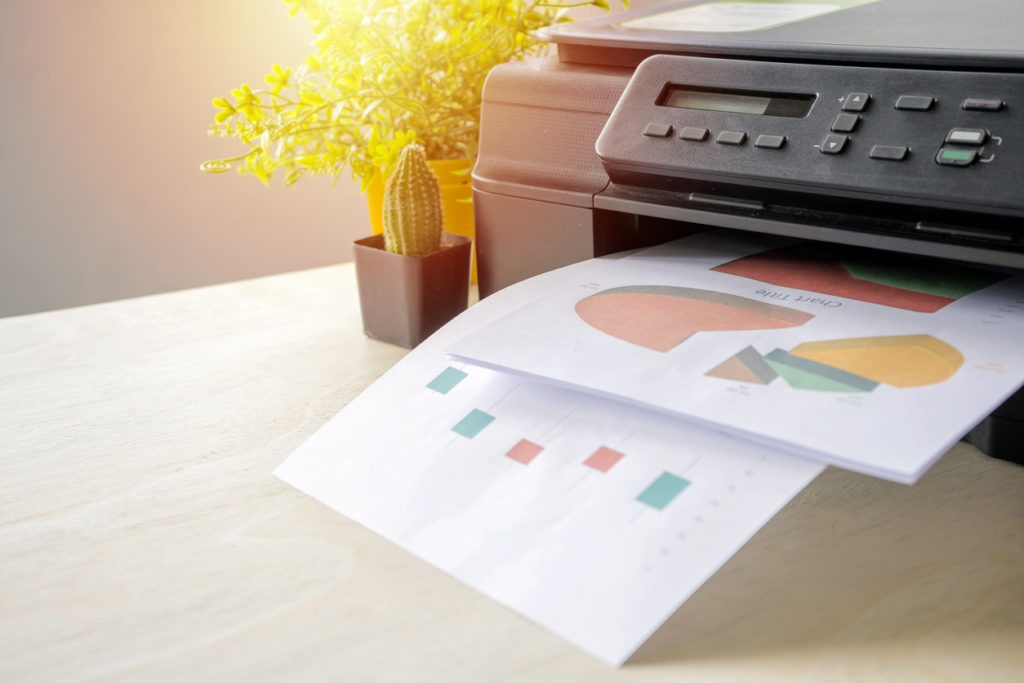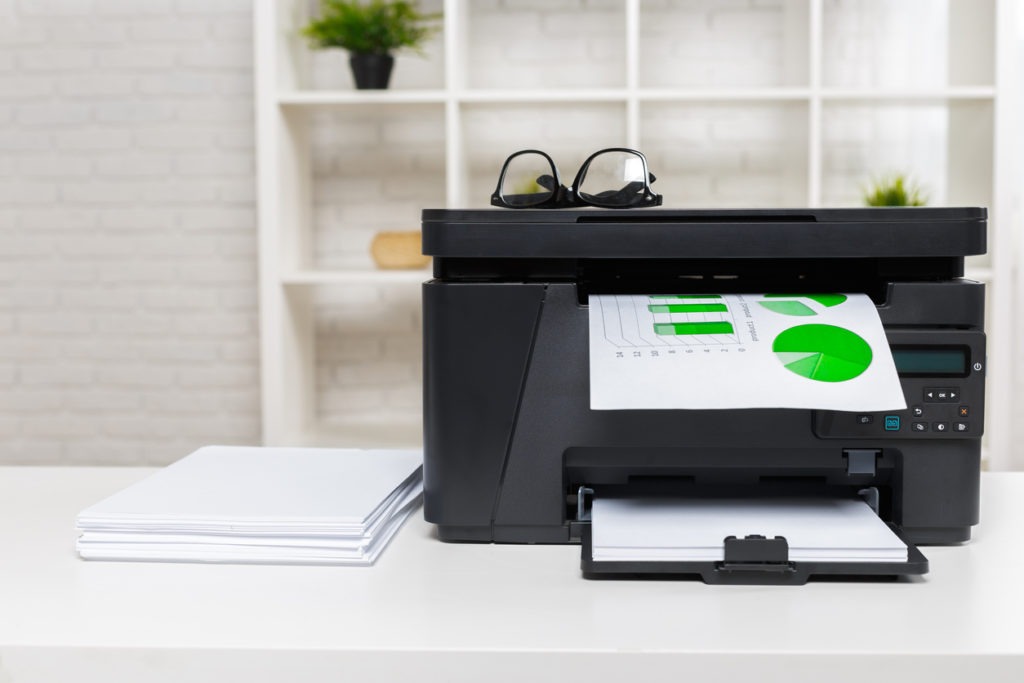Whether you have a printer for work or casual use, you would know how expensive printer ink is. A printer is useless without good-quality ink to print with. Still, with ink being so expensive, it has become a challenge for people to cut down on that cost.
The high cost of ink has become a problem for many ink owners, but there are several ways that you can cut down on the cost of ink. You must consider the kind of ink you use and the type of printer you have beforehand. Some kinds of inks generally cost more. For example, laser printers generally have a lower cost of printing at about 2 to 5 cents per page. In comparison, inkjet printers print at 5 to 10 cents per page. Although toner cartridges for laser printers are expensive, they last significantly longer, meaning a lower cost per page.
How To Save Money on Printer Ink
When purchasing devices to set up your home office, it is also essential to consider the maintenance cost of those devices. A paper shredder and scanner usually do not need extra supplies or maintenance. On the other hand, printers require printer ink and supplies such as paper to make them functional.
The most common kind of printer used is an inkjet printer. These printers have many printhead nozzles designed to move from side to side over the paper fed to them. It then sprays microscopic ink droplets to reproduce the image or text you see on the screen. Although they are the most common kind, their inks are pretty expensive. However, if you are smart with how you print, you can make them last longer and save money.
1. Only Print What Is Necessary
When trying to save on printer ink costs, you must think before you print. If you print unnecessary documents and pictures, you will use your ink quicker and need to replace it much more frequently. To avoid using up your ink on unnecessary prints, ask yourself whether you need to print out a particular document or a picture. For example, if you need to sign and send a document physically, can you instead sign it digitally and send a soft copy.
Many times there are photos, recipes, documents, and other items that you don’t need a printed version of. When you ask yourself whether or not you need a hard copy of a digital file, you will weigh the pros and cons and make a conscious decision. Printing less saves you not only ink but also the amount of paper you use and waste you create.
2. Preview Before You Print
Another way to reduce the number of prints you take is by previewing your document or picture beforehand. If you skip this step, the document may be printed in the wrong font or be misaligned. By clicking the print preview option, you can see exactly how your document will look printed. That way, you can avoid incorrect prints, which waste precious ink.
The print preview option also allows you to print your document or picture in grayscale. By printing in grayscale, you can save your colored inks for important images you may want to print.
3. Stick With Brand-Name Ink
Although it may be tempting to purchase third-part or no-name inks due to their low cost, original inks will last much longer. When purchasing ink, ensure that you purchase one from the company that your printer is from. Tests have proven their longevity over regular inks, meaning you will get your money’s worth with branded inks.
Additionally, cheaper inks have been known to dry on printer heads. This can cause performance issues, and you may need to get your printer repaired and cleaned, which will end up costing you even more money. Additionally, refilling your ink cartridge is a messy process and not worth the hassle and issues it causes.
4. Seal Up Unfinished Ink
If you are a regular printer user, it is always helpful to have a replacement ink cartridge handy in case you run out of ink. When you do so, ensure that you keep the ink in a sealed container or the foil bag that it was sold in. If you open an ink when you don’t need to and leave it out, oxygen in the air will dry it out, and when you go to actually use it, there will be no ink left.
A ziplock bag is the best way to store ink to avoid drying it up. Gently place your opened ink in the bag and store it safely, so there is still ink in it when you use it. This trick is perfect for those who travel frequently and don’t use their printer often.
5. Go Cartridge-Free
One of the best ways to save money on printer inks is not to use ink cartridges at all. The cartridge system is excellent for those who use their printer regularly. If you don’t, you risk drying up your ink and letting it go to waste. Recently, new types of printers have been manufactured that come with black and colored ink in bottles. According to the manufacturers, these bottles will last you two years and are equal to 90 cartridges.
Using these bottles will save a lot of money on printer ink in the long run. It also solves the issue of your printer running out of ink when you need it most. When you have the ink bottles, you can simply pour in more ink and get your important document or paper printed.
6. Remember To Keep Up a Basic Printer Maintenance Routine
When using any device, you must maintain it to avoid any damage. By ensuring that your printer is working perfectly, you enable it to work efficiently. With fewer issues occurring over time, your printer will be able to print as normal, preventing your ink from drying up.
The best way to keep your printer working optimally is to keep it in a dust-free and dry environment. This helps reduce the environmental strain that can cause the printer and ink to get damaged or leak. With minimal effort, you can extend the lifespan of your printer and the printer ink you are using.
7. Determine Whether Your Printer Is the Best Fit for Your Tasks
When purchasing a printer, you must choose one that fits the kind of printing you intend to do. There are various kinds of printers available on the market. Although technology improvement means you can use your printers more efficiently, having the right printer can save you a lot of money. For example, if you tend to print a lot, purchasing a regular printer would mean spending a lot on printer ink. To save money, you can opt for a printer that allows you to use high-yield cartridges that last longer.
Additionally, suppose you do not need very high-quality prints. In that case, you can forgo inkjet printers altogether and purchase a laser printer. Laser printers are much faster and cost less per page, saving you long-term money.
8. Print Even When It Says The Cartridge is Empty
Although it may seem counterintuitive to go against your printer, you should keep printing even when the printer says the cartridge is empty. These printer warnings are usually sent prematurely so that you start arranging new cartridges for your printer. The only way to know that your printer is out of ink is when the print appears patchy. Only then should you replace your cartridge. If you replace it prematurely, you will most likely waste a bunch of ink that you could have used otherwise.
9. Keep Your Printer Turned On
If you are trying to save money on printer ink, you must always keep your printer on. This is one of the easiest ways to save ink because a new maintenance cycle is triggered every time you restart your printer. With every new maintenance cycle, you will need to print something to ensure that the cartridge and the printheads are okay. This causes a lot of ink to be wasted.
Most printers use almost half of their ink on maintenance tasks designed to clean the printheads. When you keep your printer turned on, you can save quite a bit of ink in the long term. Since most printers do not consume much power, you do not have to worry about your electricity bill being too high or the environmental impact.
10. Adjust the Document Size
When printing documents, making just a few minor adjustments to your document size can significantly help to save paper. When editing your document, you can use smaller margins, which can help almost double the information you can include on a single page.
If you are printing a PDF, you can tinker with the settings to fit two pages side-by-side each page. That way, you can save paper and ink. Ensure that the font is not too small. Otherwise, you won’t be able to read it, and the paper will be wasted. You can also save ink by using different kinds of fonts.
11. Use Eco Fonts
Reports have shown that printing using certain fonts over others also helps you save ink. This is because some fonts are thicker, meaning you need more ink to print them. For example, switching from Arial to Times New Roman saves ink and allows your cartridges to last longer.
Traditional fonts usually have smooth and unbroken lines and look great on paper. However, since they use a lot of ink, they can drain your printer ink much faster. Alternatively, you can switch to eco fonts with empty spaces and lines throughout the text. By leaving space, it requires less ink to print. The result looks slightly faded, but you can save up to 35% ink per page.
These fonts are excellent if you are taking out regular prints. These fonts are not recommended for official or formal documents.
12. Buy in Bulk
Most people put off buying printer paper and cartridges until they absolutely need them, which results in panicked purchases and late-night runs to an office supply store. Individual cartridges are usually much more expensive as they come with a high markup. On the other hand, if you purchase in bulk, you will likely get a better deal, meaning you can buy more at a lower price.
You can also purchase multi-packs online and find a good deal that will help save you up to $10 or even more.
13. Make use of the Draft Mode
If you want to print something for your own reference then make sure you don’t print with the default settings because they are normally set to print in high-quality to provide optimum results, which is directly proportional to the ink consumption. If you have an inkjet printer then switch it to the ‘Draft’ or ‘Fast’ mode, this way your printer will use much less ink. The print quality might be not that good but everything will still be perfectly legible.
To print in Draft Mode, open Microsoft Word; click File, then Options and then Advance. Scroll down to the Print section and click the Use draft quality checkbox. Once you are done doing it, you might get dull prints but the text will perfectly be readable and most importantly, you will be saving your precious ink.
14. Print in black and white (Monochrome)
When printing a page, make sure you don’t have any unnecessary photo (even a small one) on it because it can use the color ink. If the pictures on the page are not that important then it is recommended that you get around this by printing in monochrome (only the black ink cartridge will be used).
Changing color settings normally depend on the printer. There are printers that have special software which manages all their print settings. If you want to print pages in Word, click Print, go on Print Properties and change it to Black and White.
15. Use web page’s own print option when printing directly from a website
If you want to print directly from a website then it is recommended that you use web page’s own Print option because it is completely useless to print out the whole web page with ads and vague pictures– a terrible waste! To avoid this, you can simply highlight all the text or images you want to print, press right click and select Print. It will only print out the highlighted, which will ultimately save you a lot of ink that you were going to waste on useless text and images.
Pros and Cons of Buying Third-Party Printer Inks
Purchasing cheaper third party inks is appealing but it comes with pros and cons. Here are a few things you should keep in mind before opting to buy third party inks.
| Pros | Cons |
| They have a lower cost per milliliter due to the large cartridge capacity. | The print quality may be lower. |
| They are universally compatible. | Lack of high-quality printer inks. |
| They are cheaper. | Loss of extra-functionality |
FAQs
1. How can I reduce the cost of ink in my printer?
If you want to reduce the amount you spend on ink for your printer, buy your ink in bulk, and print in draft mode. You should also consider whether you need to print a particular document before you do.
2. What color is the least used in your printer?
Cyan and Yellow are the least used cartridges in printers, while black and magenta often run out the fastest.
3. Is it cheaper to use printer ink or toner?
A toner cartridge is usually more expensive, but it also lasts longer than printer ink and delivers more paper. Due to this, the cost of printing using a laser printer is lower than if you use an inkjet printer.
Conclusion
Due to how expensive printer ink is, you must make every drop count. With just a few changes to how you print, you can easily save a ton of ink and make your printer ink last longer than ever. To save ink, ensure that you have the right kind of printer, use the right fonts, and keep your printer turned on at all times.


